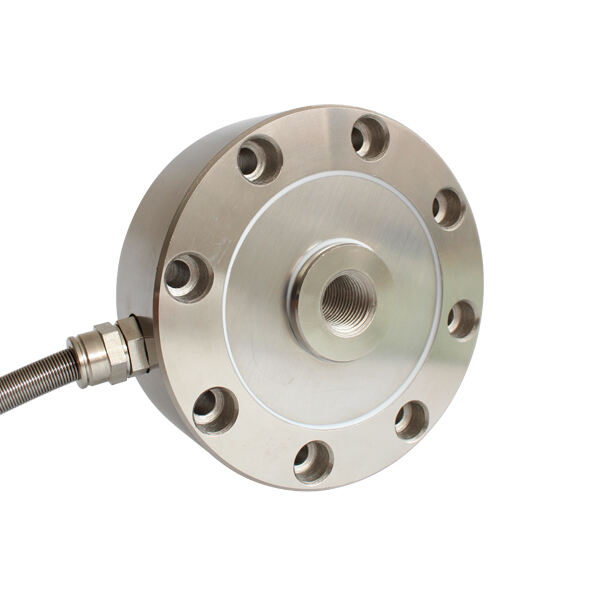What Are the Key Benefits of Using a Load Cell?
In industrial manufacturing, logistics, research, and countless other fields, precision measurement plays a critical role in ensuring quality, safety, and efficiency. One of the most essential devices for accurate force and weight measurement is the Load Cell. Whether it is part of a large weighbridge for trucks, a small laboratory scale, or a sophisticated automation system, a Load Cell provides the data needed to make informed decisions and maintain operational consistency.
This article explores the key benefits of using a Load Cell, how it works, the industries that rely on it, and why it remains the gold standard for accurate and reliable force measurement.

Understanding the Load Cell
A Load Cell is a transducer that converts mechanical force into an electrical signal. This transformation allows weight or force to be measured precisely and recorded by digital or analog devices.
Most modern Load Cells use strain gauge technology. When force is applied, the strain gauge deforms, causing a change in electrical resistance. This change is then converted into a readable electrical output. Other Load Cell technologies include hydraulic, pneumatic, and capacitive systems, each suited to different applications.
The versatility, durability, and accuracy of Load Cells have made them indispensable in industrial and commercial environments.
Key Benefits of Using a Load Cell
1. Exceptional Accuracy
One of the most important benefits of using a Load Cell is its ability to deliver highly accurate measurements. In industries where precision is critical — such as pharmaceuticals, aerospace, or high-tech manufacturing — even minor errors can have significant consequences. A Load Cell can detect minute changes in force or weight, often down to micro or nanogram levels, depending on the design.
2. Consistency and Repeatability
A high-quality Load Cell produces consistent measurements over time, which is essential for quality control and production efficiency. Repeatability ensures that every reading taken under the same conditions will yield nearly identical results, which is vital for standardized processes.
3. Wide Range of Applications
The Load Cell can be used for measuring compression, tension, bending, or shear forces. This adaptability makes it useful in applications ranging from simple weighing systems to complex industrial automation setups.
Examples include:
Truck and rail weighbridges
Industrial batching and mixing systems
Material testing machines
Crane and hoist load monitoring
Laboratory precision balances
4. Durability in Harsh Environments
Many Load Cells are designed to withstand extreme temperatures, high humidity, dust, and even corrosive chemicals. Models with high ingress protection (IP) ratings can operate in environments such as food processing plants, marine settings, or mining sites without loss of performance.

5. Ease of Integration
A Load Cell can be easily integrated into existing systems. Whether connecting to a PLC, computer, or stand-alone display unit, Load Cells offer compatibility with various output formats, including analog and digital signals.
6. Real-Time Monitoring Capabilities
When connected to a monitoring system, a Load Cell can provide real-time data, enabling immediate feedback for process adjustments. This is particularly beneficial in manufacturing and automation, where quick corrections can prevent defects and reduce waste.
7. Cost-Effectiveness Over Time
While the initial investment in a Load Cell may be significant for high-precision models, the long-term savings from reduced errors, lower maintenance needs, and enhanced productivity make them cost-effective.
8. Enhanced Safety
In applications like crane operations, lifting systems, or structural load monitoring, a Load Cell can prevent accidents by providing early warnings when loads approach unsafe limits.
9. Support for Automation and Industry 4.0
With digital and smart Load Cell technology, data can be integrated into IoT platforms, predictive maintenance systems, and automated control processes. This level of connectivity allows businesses to streamline operations and improve decision-making based on accurate, real-time data.
How a Load Cell Works in Practical Applications
A Load Cell operates by sensing the strain in its structure when a load is applied. This strain is measured by strain gauges or other sensing elements, which convert the deformation into an electrical signal. This signal is then amplified, processed, and displayed as a force or weight reading.
In a truck scale, for example, multiple Load Cells are placed under the platform. As a truck drives onto the scale, each Load Cell measures the weight distribution. The combined readings from all Load Cells provide the total vehicle weight with exceptional accuracy.
Common Types of Load Cells
Compression Load Cell
Measures force applied in one direction — typically downward. Common in weighbridges, silo weighing, and press machines.
Tension Load Cell
Measures pulling forces, often used in crane scales and tensile testing.
Shear Beam Load Cell
Ideal for industrial platforms, conveyor belts, and heavy-duty weighing where bending forces are measured.
S-Type Load Cell
Versatile for both tension and compression applications, shaped like the letter "S."
Single-Point Load Cell
Compact and designed for small to medium-sized scales, capable of handling off-center loads.
Industries That Benefit from Load Cell Technology
Manufacturing: Quality control, process automation, and material handling.
Logistics: Accurate cargo weighing to prevent overloading and ensure compliance.
Agriculture: Monitoring crop yields, livestock weighing, and feed distribution.
Food and Beverage: Ingredient batching, packaging, and quality checks.
Mining and Construction: Load monitoring in heavy machinery and safety systems.
Healthcare: Patient lifts, medical device calibration, and prosthetic testing.
Selecting the Right Load Cell
Choosing the right Load Cell depends on several factors:
Capacity: Ensure the Load Cell can handle the maximum expected load with some margin for overload.
Accuracy Class: Select based on the level of precision required.
Environmental Conditions: Choose models designed for the operating environment’s temperature, moisture, and dust levels.
Output Type: Analog or digital, depending on your system’s requirements.
Size and Mounting: Ensure physical compatibility with your equipment.
Maintenance and Longevity of Load Cells
To ensure optimal performance and extend the life of a Load Cell:
Regularly inspect for physical damage or corrosion.
Keep the Load Cell clean, especially in dusty or wet environments.
Protect cables and connectors from wear and interference.
Calibrate periodically based on manufacturer recommendations or industry standards.
Innovations in Load Cell Technology
Advancements in Load Cell technology are enabling higher precision, better connectivity, and improved durability. Some key developments include:
Wireless Load Cells: Reducing installation complexity and enabling mobility.
Smart Load Cells: Offering self-calibration, diagnostic capabilities, and IoT integration.
Miniature Load Cells: Providing precise measurements in compact devices like robotics and medical tools.
High-Capacity Load Cells: Capable of measuring hundreds of tons for specialized industrial applications.
The Future of Load Cell Applications
With Industry 4.0 and the increasing need for data-driven operations, Load Cells will continue to evolve as a critical component in industrial automation, safety monitoring, and predictive maintenance systems. Future Load Cells will likely feature AI-enhanced analytics, cloud connectivity, and even more rugged designs to meet the demands of emerging industries.
FAQ
What is the main purpose of a Load Cell?
It measures force or weight by converting mechanical force into an electrical signal that can be monitored and recorded.
Are Load Cells accurate?
Yes, high-quality Load Cells can achieve extremely precise measurements, making them essential in industries requiring tight tolerances.
Can a Load Cell measure both tension and compression?
Some models, like S-Type Load Cells, can measure both types of force.
How long does a Load Cell last?
With proper use and maintenance, a Load Cell can last many years, even in demanding industrial environments.
Do Load Cells need calibration?
Yes, periodic calibration ensures measurement accuracy and compliance with industry standards.
Can Load Cells work in extreme conditions?
Yes, many are designed to operate in high temperatures, wet conditions, or corrosive environments.
Are wireless Load Cells reliable?
Modern wireless Load Cells are highly reliable and are increasingly used in applications where wiring is difficult or hazardous.
Table of Contents
- Understanding the Load Cell
- Key Benefits of Using a Load Cell
- How a Load Cell Works in Practical Applications
- Common Types of Load Cells
- Industries That Benefit from Load Cell Technology
- Selecting the Right Load Cell
- Maintenance and Longevity of Load Cells
- Innovations in Load Cell Technology
- The Future of Load Cell Applications
- FAQ
